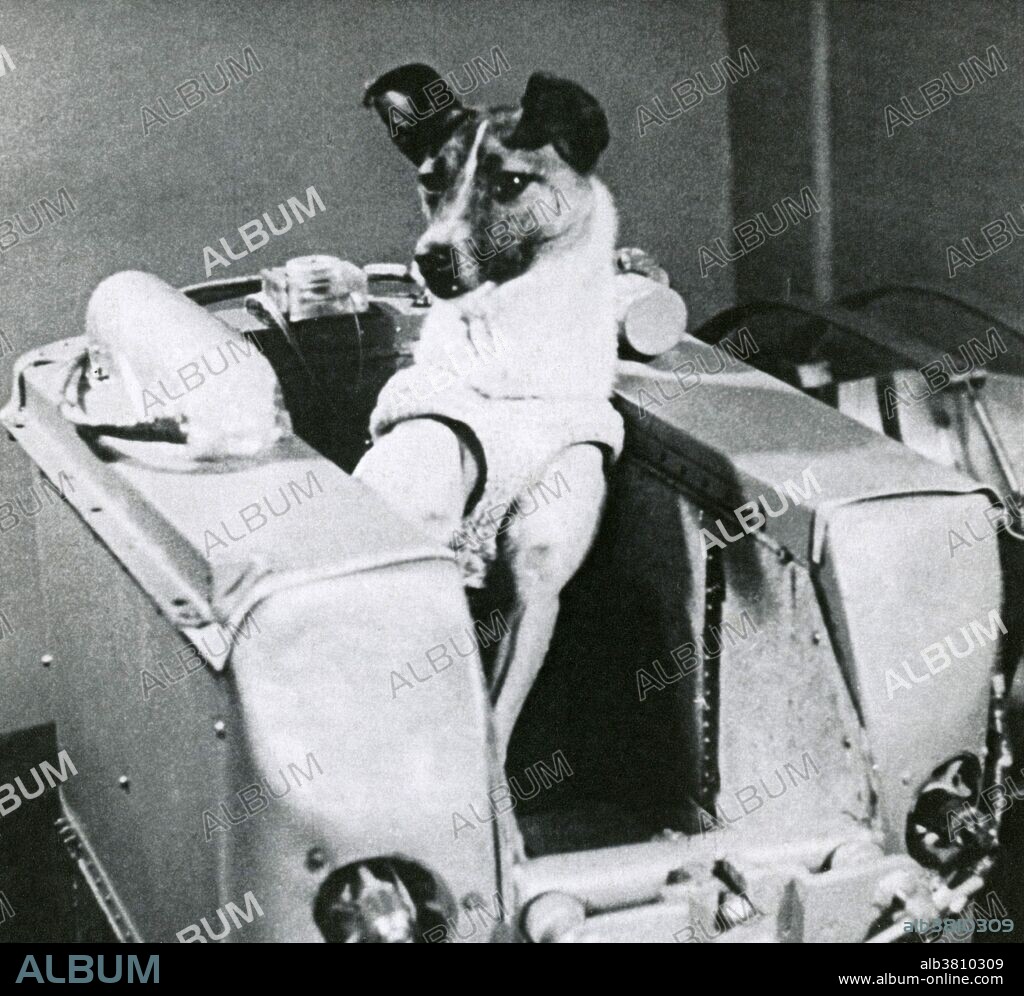alb3810309
Laika, First Dog in Space, 1957

|
Add to another lightbox |
|
Add to another lightbox |



Title:
Laika, First Dog in Space, 1957
Caption:
Laika inside a mock-up of the cabin of the Soviet Sputnik 2 spacecraft. Laika (Barker), became the first living Earth-born creature in orbit, aboard Sputnik 2 on November 3, 1957. She was also known as Zhuchka (Little Bug) and Limonchik (Lemon). The American media dubbed her "Muttnik", making a play-on-words for the canine follow-on to the first orbital mission, Sputnik. Laika was contained within a sealed cabin with a food store and an air conditioner. Instruments transmitted data to Earth about Laika's pulse, respiration, blood pressure and heartbeat. She died between 5-7 hours into the flight from stress and overheating. Her true cause of death was not made public until October 2002; officials previously gave reports that she died when the oxygen supply ran out. At a Moscow press conference in 1998 Oleg Gazenko, a senior Soviet scientist involved in the project, stated "The more time passes, the more I'm sorry about it. We did not learn enough from the mission to justify the death of the dog..." The spacecraft was not designed to be recovered and it burned up as it re-entered the atmosphere on April 14, 1958, 162 days after its launch.
Credit:
Album / Science Source / New York Public Library
Releases:
Model: No - Property: No
Rights questions?
Rights questions?
Image size:
3510 x 3231 px | 32.4 MB
Print size:
29.7 x 27.4 cm | 11.7 x 10.8 in (300 dpi)
Keywords:
1950S • 1957 • 20 XX TWENTIETH CENTURY • 20TH CENTURY • 20TH • AEROSPACE • ANIMAL CRUELTY • ANIMAL IN SPACE • ANIMAL TESTING • ANIMAL • ASTRONAUTICS • BITCH • BW • CANINE • CELEBRITIES • CELEBRITY • DOG • FAMOUS • FEMALE • FIRST ANIMAL IN SPACE • FLIGHT • HISTORIC • HISTORICAL • HISTORY • IMPORTANT • INHUMANE • LAIKA • LIMONCHIK • MANNED SPACEFLIGHT • MUTTNIK • NOTABLE • NOVEMBER 3 • NOVEMBER 3RD • ORBITAL MISSION • OUTERSPACE • PHOTO • PHOTOGRAPH • RUSIA • RUSSIA • RUSSIAN SPACE PROGRAM • RUSSIAN • SCIENCE • SOVIET SPACE PROGRAM • SOVIET UNION • SPACE (COSMOS) • SPACE ANIMAL • SPACE EXPLORATION • SPACE FLIGHT • SPACE MISSION • SPACE PROGRAM • SPACE RACE • SPACE SHIP • SPACE TRAVEL • SPACE • SPACECRAFT • SPACEFLIGHT • SPACESHIP • SPATIAL • SPUTNIK 2 • TWENTIETH CENTURY • UNION OF SOVIET SOCIALIST REPUBLICS • USSR • WELL-KNOWN • ZHUCHKA
 Pinterest
Pinterest Twitter
Twitter Facebook
Facebook Copy link
Copy link Email
Email

